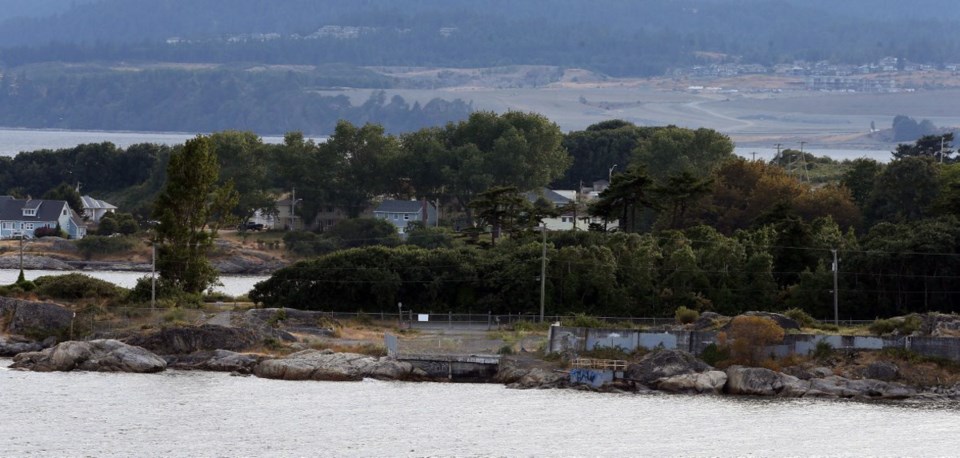A final, $750,000 nail has been driven in the coffin of plans to put a sewage treatment plant at McLoughlin Point.
Lisa Helps, chairwoman of the Capital Regional District’s sewage committee, confirmed Saturday that the Esquimalt site has now been formally ruled out.
The three firms that presented formal proposals to build a sewage treatment plant there will each be paid $250,000, as previously agreed by contract.
“It kind of puts to rest or to bed the McLoughlin proposal,” said Helps, who is also Victoria’s mayor.
The CRD was forced last year to abandon plans to put a $230-million sewage treatment plant at McLoughlin Point after Esquimalt refused to rezone the former gasoline tank farm.
About $60 million — and nine years — had already been spent on the project, mandated by the provincial government, by that point. The entire project, initially budgeted at $788 million, was to be in operation by 2018.
Helps said it’s time to get on with making plans for treating sewage. “Am I frustrated about the amount of money that’s been spent? Yes,” she said. “But McLoughlin has been a shadow hanging over us and our ability to move forward.”
Esquimalt Mayor Barb Desjardins, who opposed a sewage plant at the site, agreed.
“With McLoughlin still hanging around, it was creating some unease and distrust,” she said. “The new process can now move forward and we’ll come up with a great plan.”
The CRD has established two committees to look for a new sites.
So far, the eastside select committee, made up of representatives from Victoria, Saanich and Oak Bay, has short-listed eight possible sites.
The westside committee for Esquimalt, Colwood, View Royal, Colwood, and the Esquimalt and Songhees First Nations has identified 20 possible sites.
The plan is to embark on public consultations and study. The final selection could come down to one central site or several sites.
The CRD is under the gun in terms of timing. The federal government has promised funding of $253 million, but a site and plans for a plant have to be finalized by 2016 in order to secure it.
According to the CRD, Greater Victoria dumps an average of 82 million litres of raw sewage into the Juan de Fuca Strait every day. The sewage is screened before being discharged, but is otherwise not treated. The provincial government requires the region to adopt secondary treatment, which uses bacteria to consume the organic matter.
Critics of the sewage treatment plan say that ocean currents are effective at breaking down the waste and no further treatment is needed.



